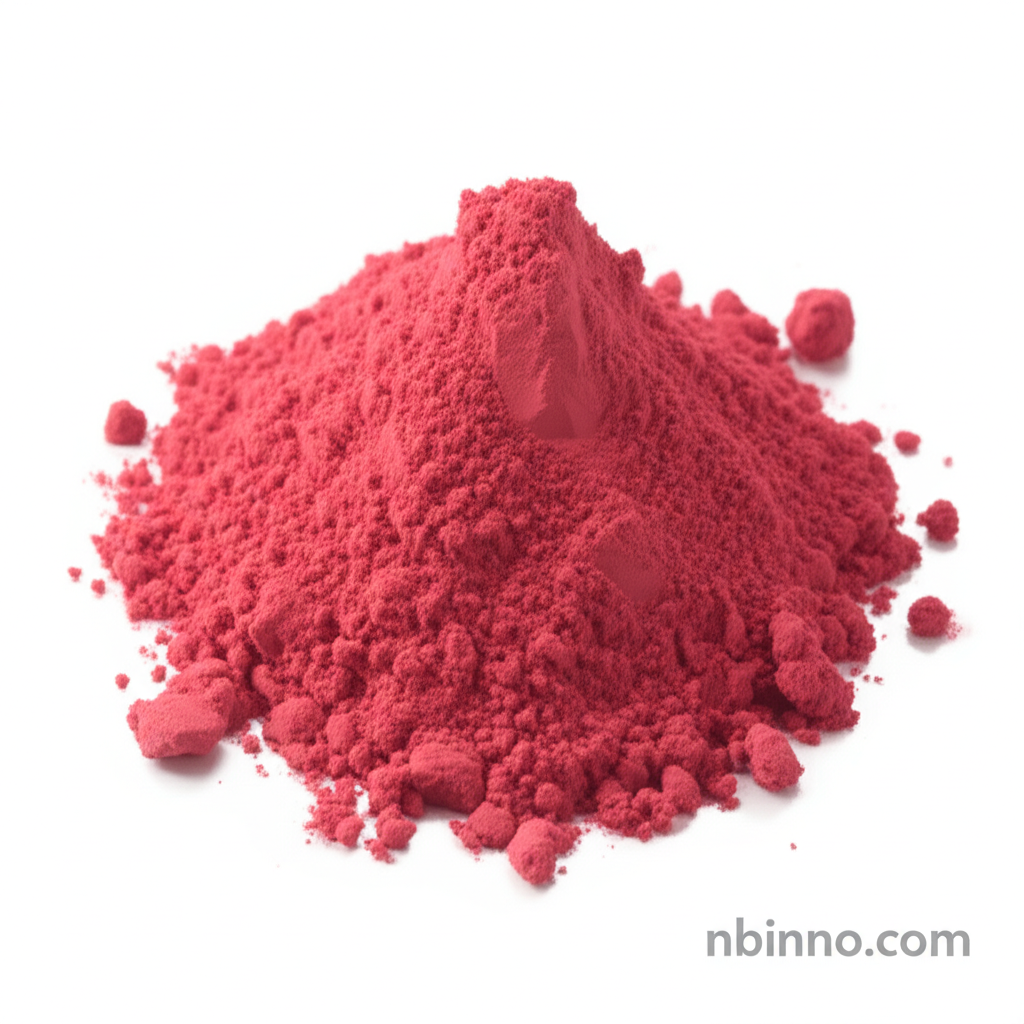Reactive Red MX-5B: A Versatile Monoazo Dye for Textile and Biological Applications
Discover the high solubility and broad application range of this essential reactive dye.
Get a Quote & SampleProduct Core Value

Reactive Red MX-5B
Reactive Red MX-5B is a highly water-soluble monoazo dye, extensively utilized for its vibrant color and excellent binding properties. It is particularly valuable in the textile industry for dyeing cellulose, nylon, silk, and wool, offering bright and durable coloration.
- Explore the benefits of reactive red mx-5b dye for achieving vivid and lasting colors on various natural and synthetic fibers.
- Understand the unique properties of monoazo dye structures and how they contribute to effective textile dyeing processes.
- Learn about the application of CAS 17804-49-8 dye properties in both industrial textile manufacturing and specialized biological staining.
- Investigate how the high solubility of this dye facilitates easier application and better penetration in dyeing baths.
Key Product Advantages
Exceptional Dyeing Performance
Leverage the reactive nature of this dye to achieve superior color fastness and brilliance on a wide range of fabrics, making it a top choice for textile dyeing.
Dual Application Potential
Benefit from its utility in biological visualization techniques, such as osteocyte canalicular system staining, showcasing its versatility beyond traditional textile applications.
Environmental Consideration in Biosorption
Utilize this compound as an adsorbate in biosorption processes, contributing to research in environmental applications and waste treatment through its interaction with microorganisms like Bacillus subtilis.
Key Applications
Textile Dyeing
Achieve vibrant and durable colors on cellulose, nylon, silk, and wool using the excellent reactivity and high water solubility of Reactive Red MX-5B.
Biological Staining
Employ this dye for specific biological research applications, including the visualization of osteocyte canalicular systems in microscopic studies.
Biosorption Research
Investigate its role as an adsorbate in biosorption studies, particularly with microorganisms like Bacillus subtilis, for environmental and biotechnological research.
Chemical Intermediate
Serve as a foundational component in the synthesis of other specialized chemicals or dyes, owing to its reactive functional groups.
